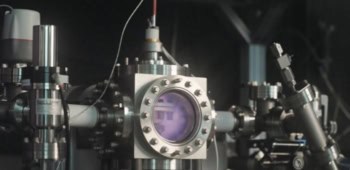A major gathering of fusion scientists has concluded that the next target for magnetic fusion research should be the creation of a burning plasma. The 280 scientists from the US and around the world who met last week in Snowmass, Colorado, also agreed that the International Thermonuclear Experimental Reactor (ITER) and two smaller proposed magnetic confinement experiments would all contribute to the development of fusion energy. The US government will use these and other conclusions from the meeting to decide whether to join ITER.
The US was a founder member of the ITER project – along with Europe, Japan and Russia –but pulled out in 1998 when the huge cost of the scheme became clear. However, the US recently expressed an interest in rejoining the project following the design of a new reactor by the existing partners that is less ambitious – and cheaper – than the original.
At the Snowmass meeting the scientific and technical merits of ITER were compared with those of two more modest proposals – FIRE, being developed by researchers in the US, and IGNITOR, an Italian project. Physicists at the meeting concluded that all of the projects could be used to study burning plasmas – plasmas that can maintain their high temperatures largely through the self-heating of fusion reactions – and agreed that none of the projects poses serious engineering problems.
Delegates decided that IGNITOR would provide the earliest opportunity to study a burning plasma, but also noted that this project would produce such a plasma only fleetingly. FIRE and ITER would enable investigations of longer-lived plasmas, they said, with ITER aiming to demonstrate a sustained output of fusion energy.
“There are no show-stoppers for any of these devices, although there are still issues to be overcome in each case,” says Ned Sauthoff of Princeton University, one of the co-chairs of the meeting. “I’m confident that we would learn things from each of them.”
The conclusions from Snowmass will be used by an advisory committee of the US Department of Energy to decide which project or projects the US should back. Sauthoff estimates that FIRE would cost about $1.2bn and that the total cost of ITER will be around $5bn. IGNITOR, he says, would have a price tag of a few hundred million dollars.
Delegates at the Snowmass meeting also discussed inertial confinement fusion and agreed that good progress has been made in developing a number of relevant technologies: lasers, heavy ion beams, Z-pinch systems, chamber and target technology, and fast ignition. Those present noted that the US National Ignition Facility is also expected to produce a burning plasma.



